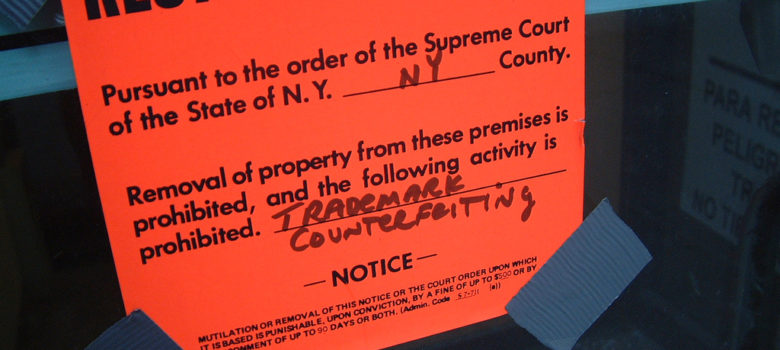Bell’s promotion of a site blocking system in Canada – rejected by the CRTC on jurisdictional grounds – was grounded in the view that it could establish a mandated blocking approach without court orders. That placed the Canadian proposal off-side the vast majority of site blocking systems around the world, but it also pointed to mounting efforts to exclude the courts from the realm of copyright enforcement. For example, the Canadian Anti-Counterfeiting Network recently appeared before the Industry committee to argue for legislative reforms that would eliminate court oversight for seizures at the border. In its place, the group argued that customs authorities should be empowered to seize and destroy goods without court review.
According to Lorne Lipkus, who represented the group at the copyright review before the Standing Committee on Industry, Science and Technology:
We would like the introduction of a simplified procedure, under section 44, which relates to CBSA’s request for assistance program, so that it is clear that border officers are authorized and mandated to not only detain these products coming into Canada but to seize them. Right now, they detain them. We’re asking that they be allowed to seize them, as is the case around the world, and destroy them, without the need for a judicial proceeding which is the hallmark of the existing program [emphasis added].
Lipkus explained the group’s proposed process under questioning with NDP MP Brian Masse:
I don’t know if it’s a regulatory change or not, but in the existing legislation, there’s a 10-day period of notice given to both the importer and to the rights owner. It says, “These goods are on their way into the country. You, Mr. Rights Holder, have 10 days to bring an action or else we’re going to be releasing the goods in some way.” The importer is given 10 days’ notice to say that these goods are suspected of being counterfeit. In the cases that we’re finding right now, the importer either doesn’t respond, or says, “I didn’t order those goods.” If part of the process were an abandonment situation, which is done with other goods in Canada in similar situations—after 10 days the importer does not respond, or responds and says they didn’t order these goods—then why can’t we destroy them right away? Why is the government paying to continue to store these goods? They could be destroyed immediately.
Yet under subsequent questioning from Liberal MP David Lametti, it became readily apparent that the proposal has little to do with copyright. In fact, Lametti hinted that the group was misleading the committee with a policy bait-and-switch by arguing for copyright reforms that were fundamentally about patents and trademark.
Mr. David Lametti: Thank you. Mr. Lipkus, one of the fundamental principles of copyright law is that copyright on the book doesn’t mean ownership of the book. It’s a physical object versus copyright. Most of the examples you gave were a patent or a trademark – I think you would definitely agree with that – with copyright coming in at the end. Now, if there’s a copyright violation on the label, why should it give you the right to seize or even destroy the physical object?
Mr. Lorne Lipkus: That’s an excellent question. In fact, what happens in practice right now is that they seize the package, because it is illegal to be using the packaging to advertise that. If the product is authentic, for example, it doesn’t show—
Mr. David Lametti: But then you’re back to trademark and a patent again for authenticity.
Mr. Lorne Lipkus: No, no. If that package—
Mr. David Lametti: The copyright only applies to the design on the label.
Mr. Lorne Lipkus: Exactly.
Mr. David Lametti: It doesn’t apply to the authenticity of what’s inside.
Mr. Lorne Lipkus: Exactly. You’re 100% right, and so the product itself can flow through. No one is taking a position on the product. Unfortunately, when the packaging is an infringement, very often the product is counterfeit as well, but—
Mr. David Lametti: You seem to be pushing for ability to seize or destroy the product based on copyright. If that’s the case, you’re misleading us.
Mr. Lorne Lipkus: No. If I said that, that’s only predicated on the product being counterfeit. We’ve seen toys, for example—
Mr. David Lametti: We’ve seen toys under patent or trademark.
Mr. Lorne Lipkus: Correct.
Given the lack of connection to copyright, the committee should have little trouble dismissing the proposal. But the broader trend should raise alarm bells as rights holders increasingly look to exclude the courts from the copyright enforcement process.








Pingback: This Week’s [in]Security – Issue 86 - Control Gap | Control Gap
The content is very informative. Thanks